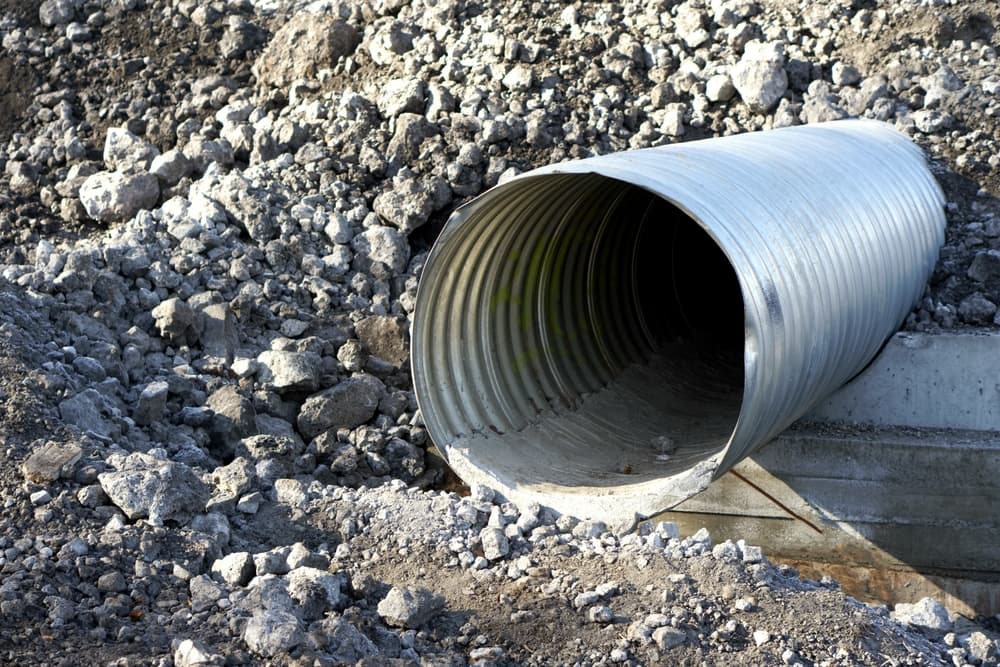Professional Road Construction Services for Smooth Travel
Wiki Article
Culvert Setup Facilitated: Step-by-Step Overview for Success
Installing culverts might look like a straightforward task, but making sure an effective result calls for cautious preparation and execution. From picking the proper culvert dimension to integrating correct drain actions, each action in the installment process plays a vital role in the capability and durability of the culvert system. By adhering to a methodical technique and taking note of key details, the setup can proceed smoothly, lessening prospective problems down the line. Remain tuned to reveal the important actions and considerations that can make culvert installment a seamless and effective venture.Selecting the Right Culvert Size
Picking the suitable culvert dimension is vital for making sure efficient water circulation and architectural stability in culvert setup jobs - Pad Construction. The size of the culvert straight impacts the flow capability of water with the structure. A culvert that is as well tiny can result in flooding and overflow, while one that is too large may result in reduced water rate, potentially triggering debris buildup and blockagesTo figure out the appropriate culvert size, elements such as the watershed location, top circulation rates, and hydraulic performance demand to be thoroughly thought about. Estimations based on these parameters help in selecting a size that can appropriately handle the predicted water volume while minimizing the threat of clogs and architectural failing.
It is vital to consult engineering standards and standards to make certain that the chosen culvert dimension fulfills the task needs and local guidelines (Pad Construction). By choosing the ideal culvert size, project supervisors can maximize water circulation, protect against possible concerns, and boost the total performance and long life of the culvert setup
Preparing the Installment Site
Efficient culvert installation demands meticulous prep work of the installation site to guarantee optimum structural support and functionality. Before commencing the setup process, it is crucial to clear the website of any debris, plants, or blockages that can hamper the culvert's placement. Ensuring a degree structure is crucial for the correct positioning and stability of the culvert. This may involve grading the website to produce a smooth, even surface area that can appropriately support the weight of the culvert and any kind of awaited tons. Additionally, correct compaction of the soil beneath the culvert is essential to avoid resolving or moving in time.Moreover, it is necessary to consider factors such as dirt structure, groundwater degrees, and ecological influences when preparing the installation site. Carrying out a comprehensive website assessment can help identify any type of prospective obstacles or dangers that may impact the culvert's efficiency. By putting in the time to prepare the installment moved here website correctly, you can aid assure an effective culvert installment that fulfills architectural needs and makes certain long-lasting performance.
Putting the Culvert Properly

The grade at which the culvert is put is vital for keeping a proper slope for water circulation. A steady slope assists avoid pooling and promotes effective water drainage. Additionally, the culvert must be oriented appropriately to ensure that the inlet and electrical outlet remain in the appropriate areas. This alignment is important for the culvert to work properly in handling water flow.
Backfilling and Compacting the Soil
Proper backfilling and compaction of the dirt around the culvert is important to ensure stability and prevent potential issues in the future. As soon as the culvert is appropriately positioned, the next important step is to backfill the area around it with ideal material. The backfill material need to be devoid of rocks, debris, and raw material to stay clear of damage to the culvert. It is advised to use granular product such as sand or gravel for backfilling, as it provides great water drainage and compaction residential or commercial properties.Compaction assists in reducing the opportunities of settlement and makes sure consistent support around the culvert. It is essential to small the dirt uniformly on all sides of the culvert to keep its structural integrity.
Proper backfilling and compaction not just provide security to the culvert but likewise help in protecting against dirt disintegration and maintaining the longevity of the culvert system.
Making Certain Proper Water Drainage Integration
Incorporating effective water drainage services plays an essential function in the overall performance and long life of culvert installations. you could try here Appropriate water drainage integration is necessary for managing water circulation, stopping disintegration, and ensuring the structural integrity of visit this page the culvert system. To accomplish this, it is essential to design a detailed water drainage plan that thinks about elements such as the volume of water anticipated, the topography of the location, and the type of soil present.
In addition, incorporating attributes like disintegration control procedures, such as riprap or greenery, can further boost the efficiency of the water drainage system. By carefully intending and carrying out these drainage solutions, culvert installments can work efficiently and hold up against the examination of time.
Conclusion
To conclude, appropriate culvert installation is critical for preserving efficient water drainage systems. By choosing the appropriate culvert dimension, preparing the setup website, putting the culvert correctly, backfilling and condensing the soil, and making certain appropriate drain assimilation, success can be accomplished. Complying with these actions will aid guarantee the long life and efficiency of the culvert, ultimately adding to the total success of the drainage system.Report this wiki page